Ohio - Exciting and Diverse - Section 3 - Economy
Ohio Agriculture
The best place to start an article on Agriculture would be farms and farmers
Ohio has the most famous farm in the world. Malabar Farm, now Malabar Farm State Park in Pleasant Valley, Richland County. It was the dream of Louis Bromfield from Mansfield. He was an author of many books. He attended Cornell Agricultural College, then served in France in WWI. He returned to France to live until just beforer WWII. He worked as an author and journalist winning a Pulitzer prize. He also worked writing scripts for MGM movies. While he was in France, he observed French farming methods and adopted ideas for conservation methods which he employed at Malabar. He had many famous visitors to the farm to study his agricultural practices. Humphrey Bogart and Lauren Bacall were married at Malabar farm.
https://malabarfarm.org/historical-timeline/
There are farms that provide recreation for visitors. Examples are:
Gallant Farm in Delaware, Ohio. Gallant Farm – Preservation Parks of Delaware County
Young’s Jersey Dairy Farm in Yellow Springs, Ohio. https://youngsdairy.com/
Bob Evans Farm in Rio Grande, Ohio
There are many agriculture related companies that do business in Ohio. These are a few with which I am familiar:
Becks Seed
Ebberts Field Seeds Inc.
Schlessman Seed Company
Scotts Lawn Miracle-Gro
The Andersons
Tractor Supply
Rural King
Land-O-Lakes, Inc.
Case Farms
Pioneer Hi-Bred International
Unified Ag Solutions
Marion Tile Company
Advanced Drainage Systems
Tractor manufacturers with sales in Ohio include:
Ventrac Small tractors with attachments for lawn, garden and snow removal.
John Deere
Massey Ferguson
New Holland
Kubota
Case IH
Mahindra
Fendt
Claas
Deutz-Fahr
Ford no longer makes Ford tractors, but you can still find them used, but New Holland was a division of Ford.
My parents worked in factories in Marion, Ohio, sometimes working double-shifts, saving money to purchase a farm. In 1951, we purchased a small 18 acre site just west of Richwood, Ohio. On that small farm, we raised hampshire hogs. We had become farmers. Over a period of time, we purchased two more farms and much more acreage, adding corn, beans and cattle.
Over the years, I watched fence rows disappear and saw tractors change from small tractors that could be towed behind a truck on a flat bed that could manage a top speed of about 25 mph. As tractors and other farm machinery grew larger and more complex, and as tractor road speeds made it possible to travel between owned and leased land, the fields and farms grew larger continually.
Today, do we have farmers? Not the farmers of 1951. Today’s farmers are agri-businessmen. They use computers to measure production, planting times, and crop rotation. They constantly watch the farm market changes and prices. In 1951, my dad would not have believed that a tractor could cost a half-million dollars, or that many farmers would be managing a multi-million dollar business.
One of the most controversial issues facing farmers and farming communities is energy. Once the major source of energy in Ohio was from the use of fossil fuels. Because of environmental concerns, government regulation has greatly reduced using fossil fuels. The movement toward solar energy is so problematic, that town meetings almost have people coming to blows. We must have energy, but we also need farm land. Can we have both? Some say yes, and some say no. The decision has been placed at the community level by the state. You cannot grow crops or have livestock on a solar farm. This has brought back the movement for nuclear power. Wind farms take up a lot of land, although you can continue farming in a wind farm.
Another problem facing the Ohio farmer is field tile. Ohio was a very wet, swampy state that made laying time mandatory for farming. In the 1800’s, the major source of tile was from tile factories in southern Ohio where clay was readily available. The clay tile was laid fairly shallow because horse-drawn machinery was not heavy enough to crush the tile. Today’s machinery does crush the existing clay tile. This problem is visually evident. Drive around Ohio in the spring and see how many fields have flooded sections. Think back to the time when this was not so prevalent. In London Ohio, there is major tile manufacturing of new plastic-based tiles that have larger capacity and can be laid deeper. The problem is the cost for the farmer. The estimated cost of needed tile replacement in Ohio is over a trillion dollars! There are grants available that will pay 50% of cost up to $500 per acre.
Ohio has nearly 77,000 farms 97 percent family owned. Ohio is a leading producer of soybeans, corn, hogs, eggs and ethanol. Ohio State University, a land-grant university is one of the nation’s leaders in agricultural education with the OSU Agricultural Technical Institute. It has a major presence at the Ohio State Fair and hosts the nation’s largest farm show, the 3 day Farm Science Review at the OSU Molly Caren Agricultural Center in Madison County.
The Farm Science Review covers 2,100 acres with a 4,000 foot runaway adjacent to the show. It features hundreds of demonstration plots, several million dollars of farm machinery, information about farm, home, and health safety. Daily field demonstrations and programs on conservation practices at the Gwynne Conservation Area. Antique Farm Equipment is own display with over 1,600 pieces of farm machinery, garden equipment and kitchen utensils. New Farm equipment is on display from John Deere, Case, New Holland and Agco. (Massey Ferguson, Fendt, Challenger, Valtra, Gleaner Combines, Sunflower Tillage and White Planters are displayed). Attendance is over 131,000 and over 500 exhibitors.
- Ohio Livestock Coalition
- Ohio Department of Agriculture
- OSU Agriculture
- Ohio Soybeans
- Ohio Farm Bureau
- Ohio FFA
- Ohio Hogs
- Ohio Sheep
- Ohio Poultry
Corn
Sweet Corn. or Zea Mays Rugosa, is high in sugar and is grown for meals. It is boiled or roasted and usually served with butter. It is also called roasting ears or corn-on-the cob. The dried kernels are used for corn meal, taco shells, corn nuts, corn syrup, glue, and handsoap. We sometimes mix the kernels with lima beans as succotash. We can also use it to make whiskey. (Gotta run and check the still!)
Indian Corn or Flint Corn, Zea May Indurate, is low in water and has a hard layer on the kernels. It be used for hominy or grits and can be ground for flour or cornmeal. Because it may contain bright colors, it is often used in displays. This is caused by cross-pollinating.
Popcorn is a variety of field corn. It has very high moisture, up to 20%. As it is heated, the water turns into steam, expands the kerneal causing it to burst up to 50 times its original size. Popcorn is often salted with butter and/or cheese. It can be combined with caramel to make popcorn balls and is found with other food products such as Cracker Jack.
Soy Beans
Soy beans are a legume native to East Asia. Besides the field variety we grow in Ohio, an edible form called edamame is picked while immature and eaten, including the pod either raw or cooked. Soy beans will ferment. Unfermented beans are used for soy milk and tofu. Fermented beans are used for soy sauce. If you pick field soybeans while very young, they can be cooked, My family has cooked them with pork. They taste fine, but have a fatty texture.
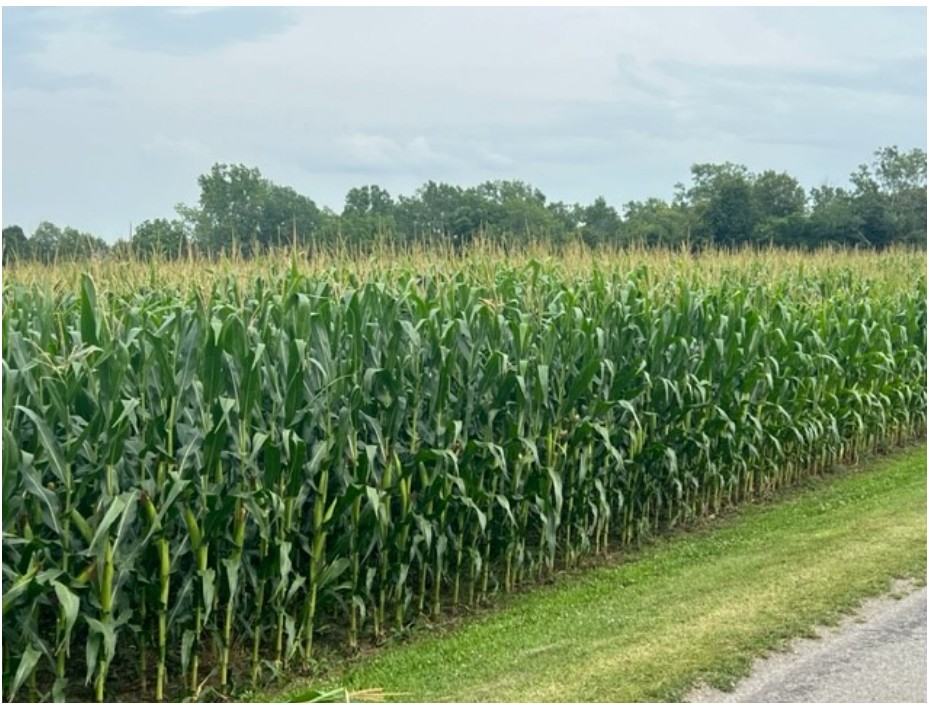
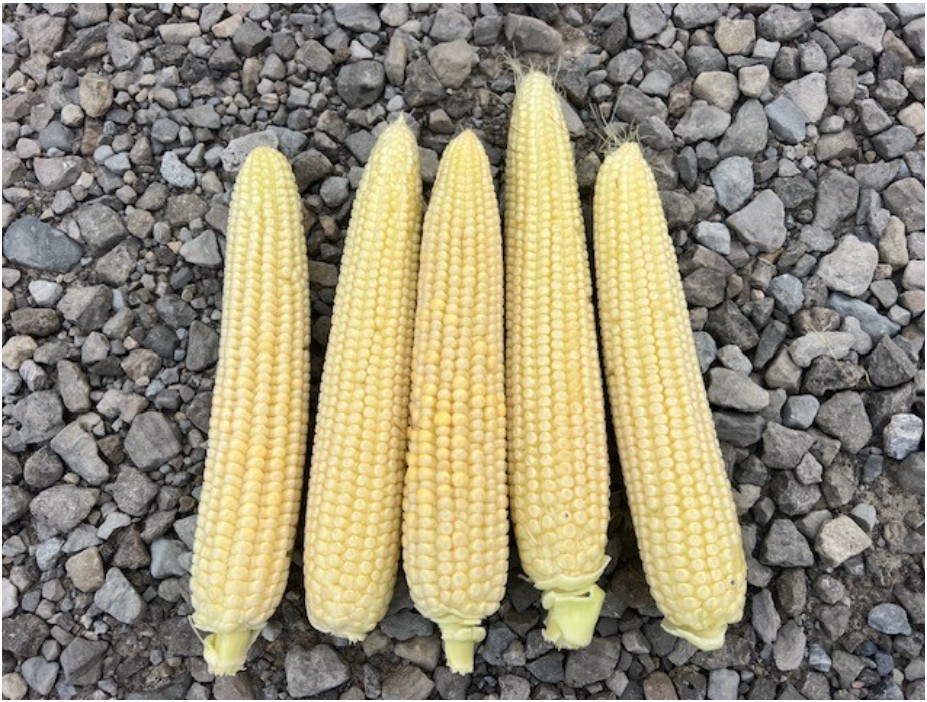
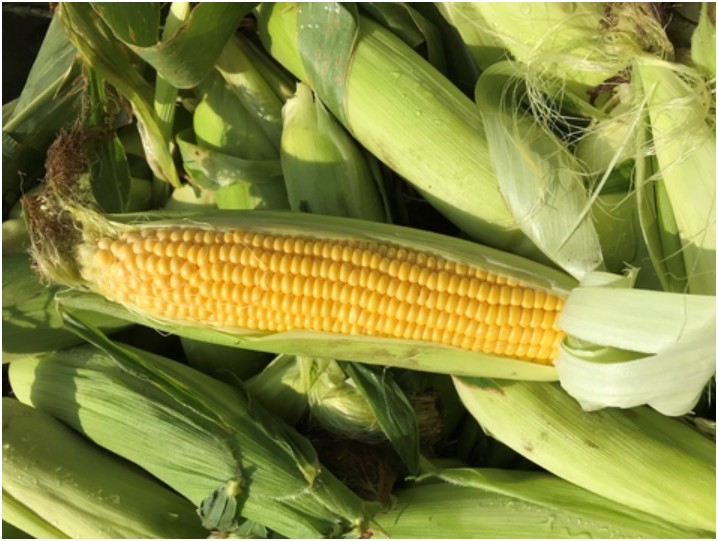
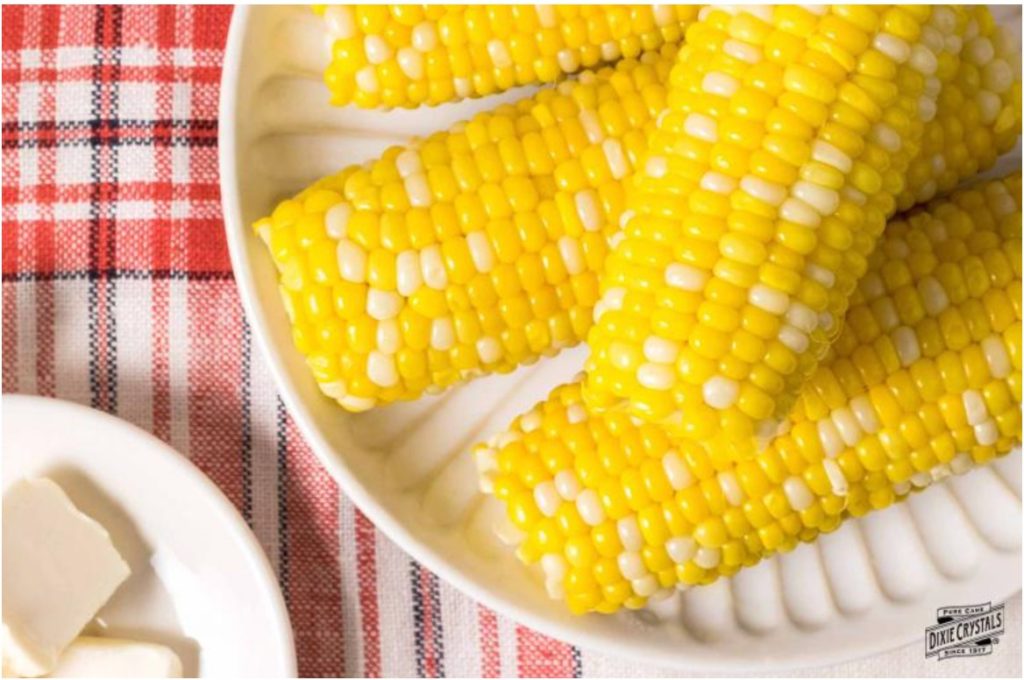
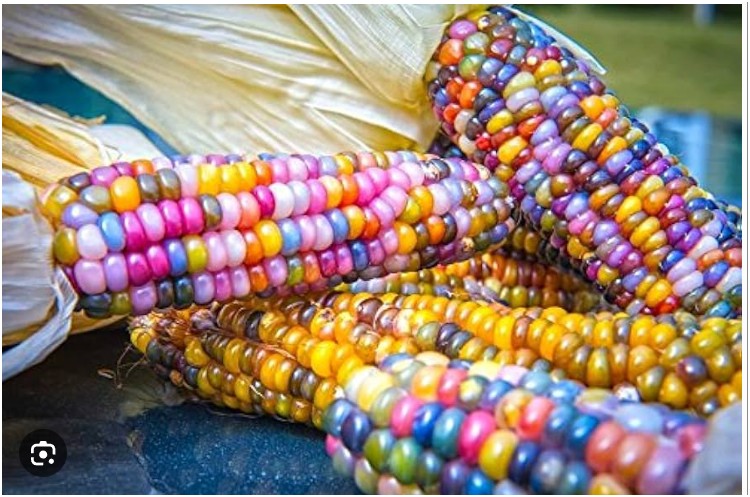
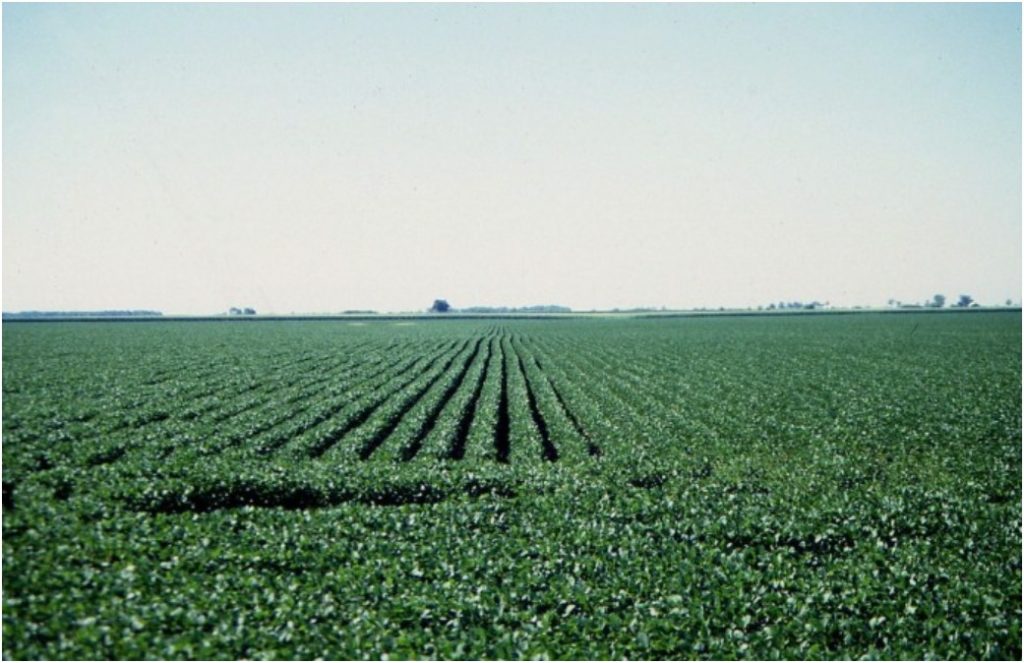

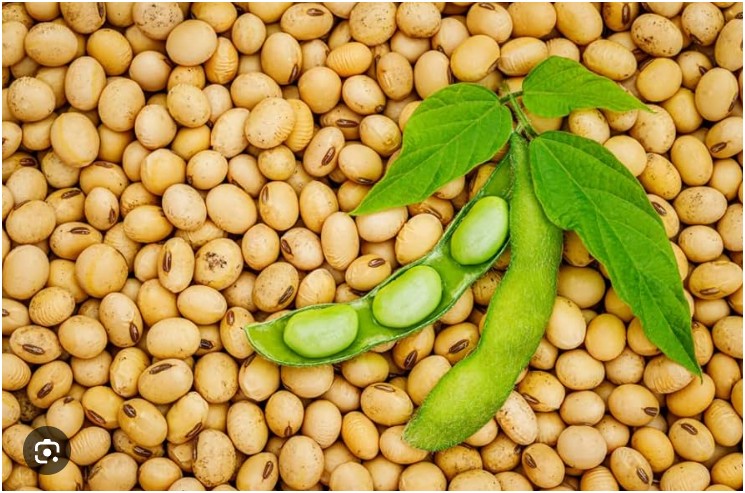

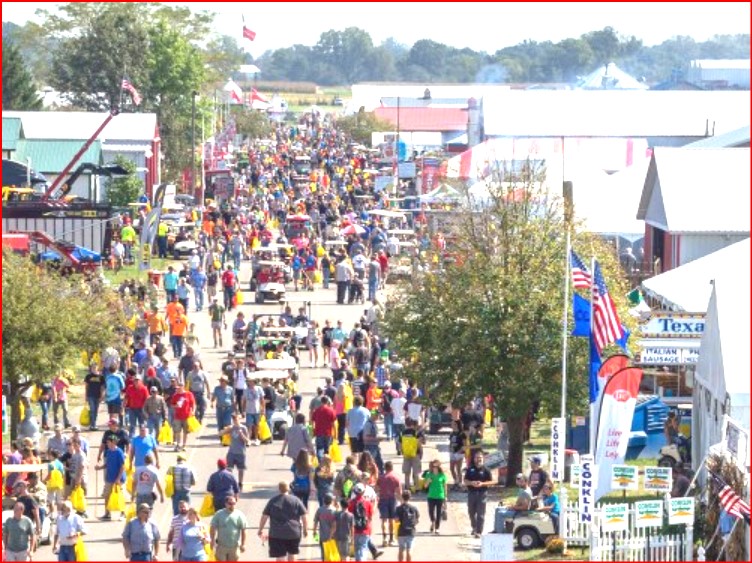
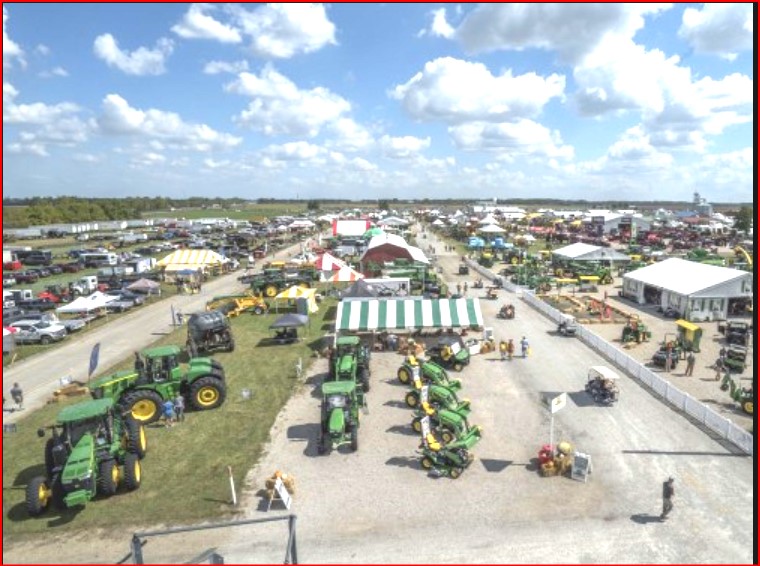
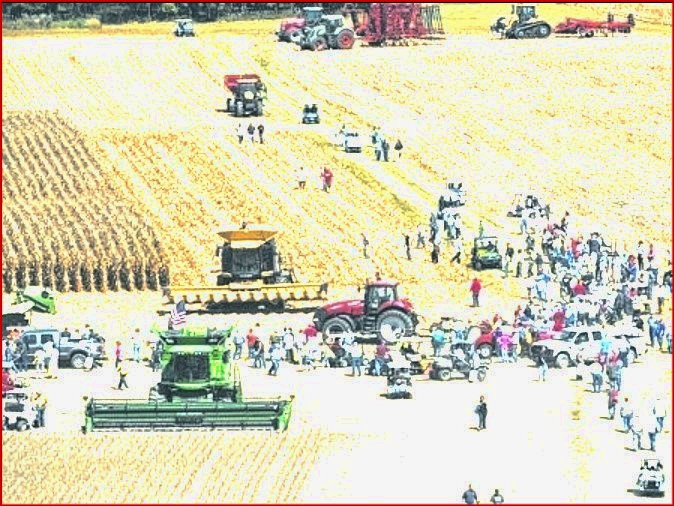
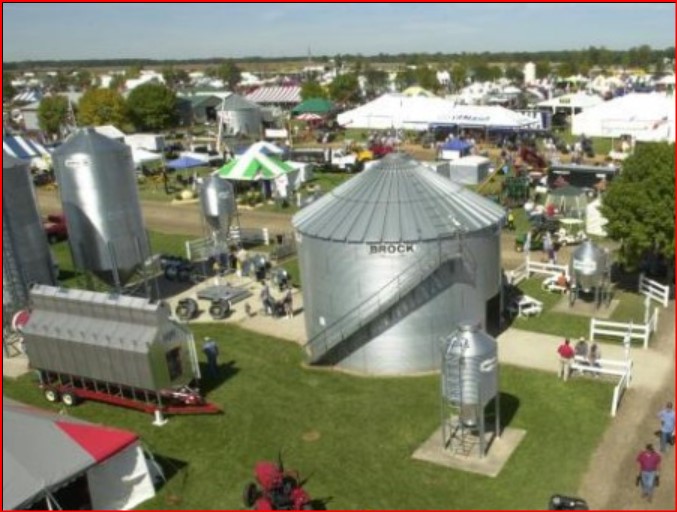
Ohio Farm Examples
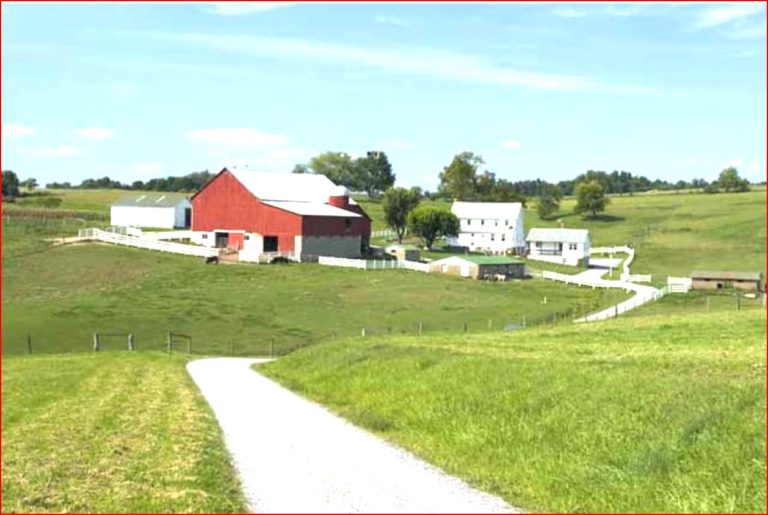
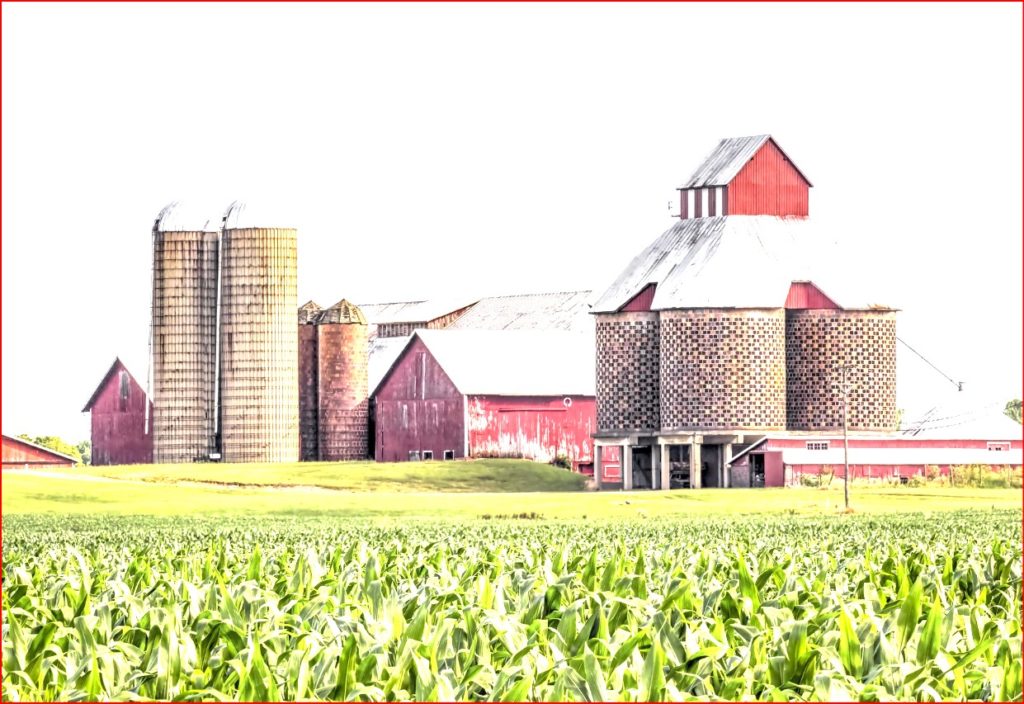
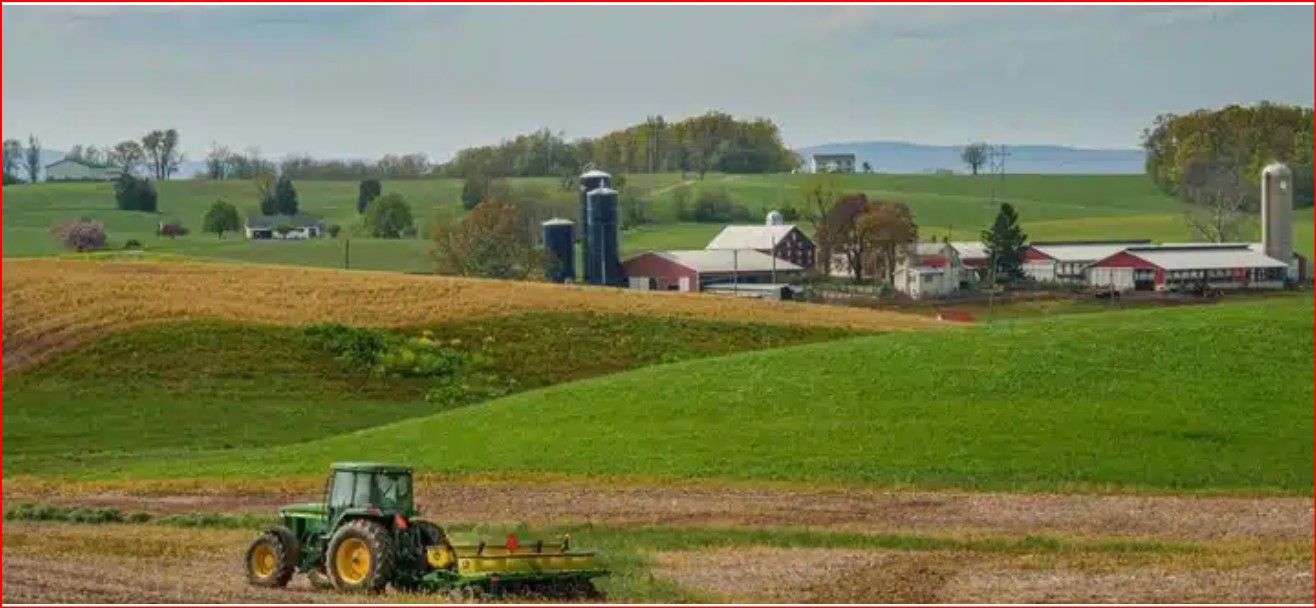
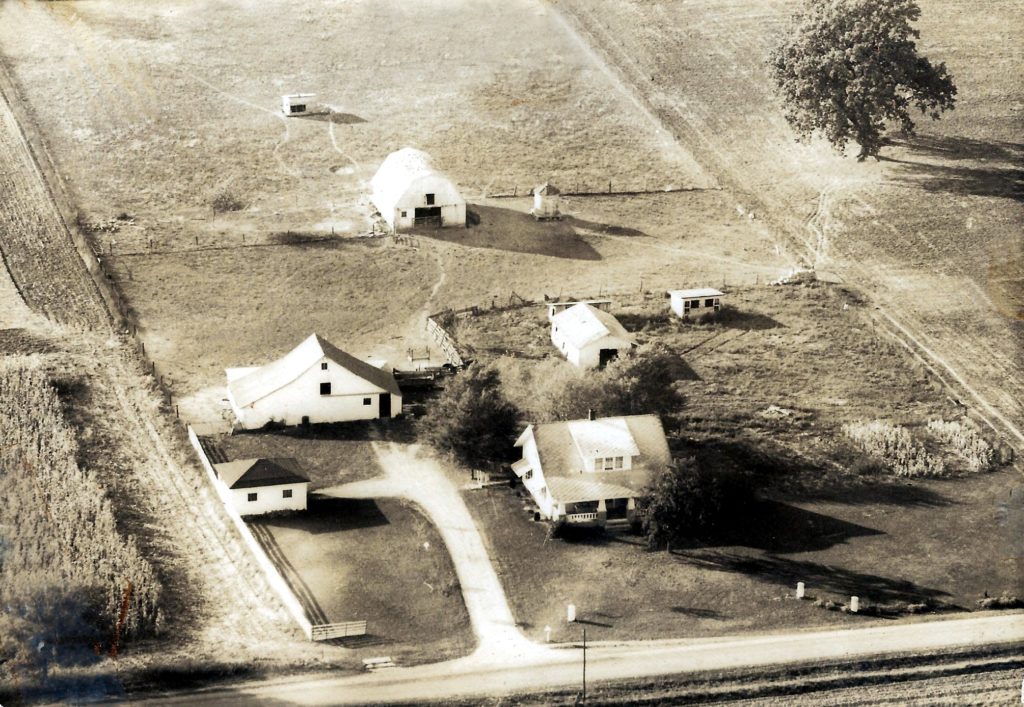
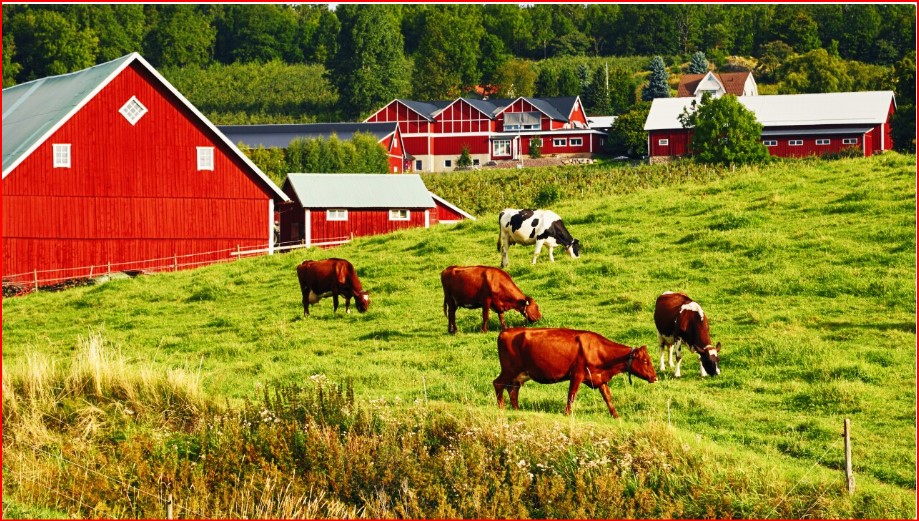
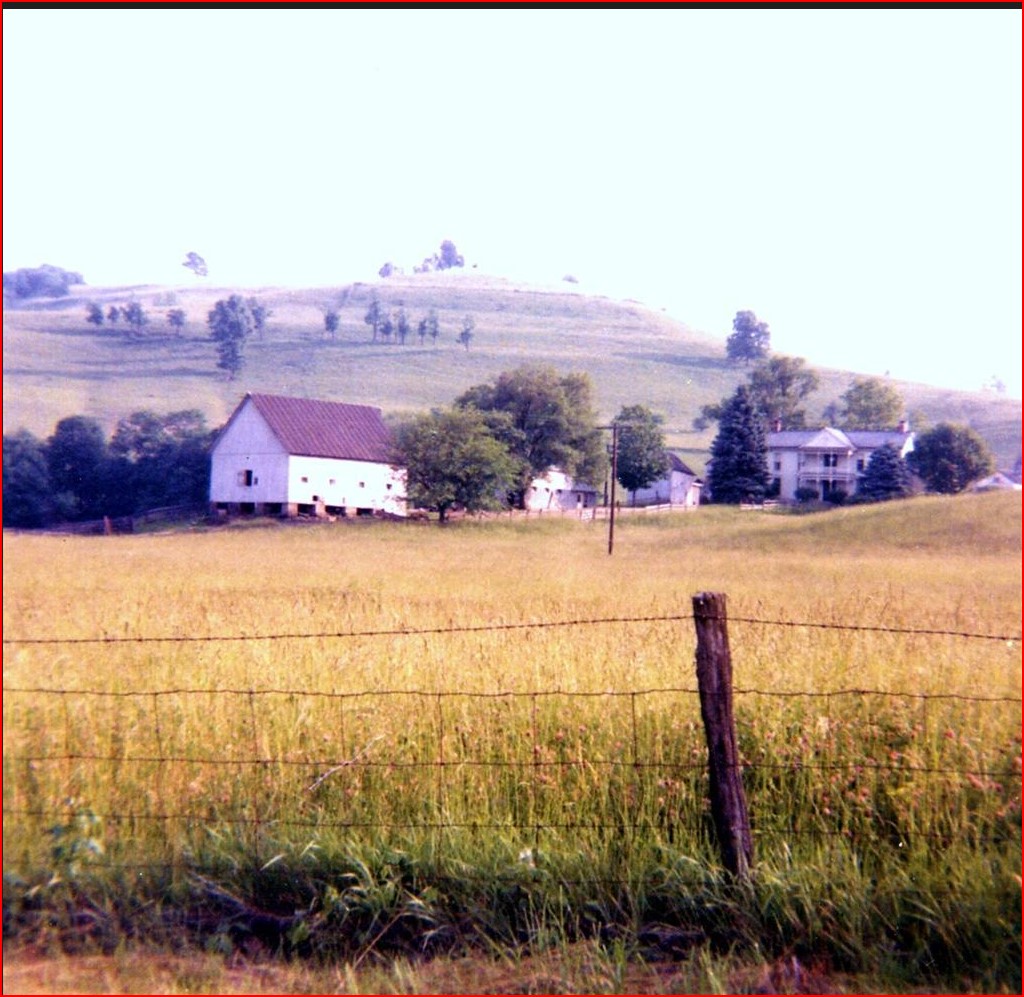
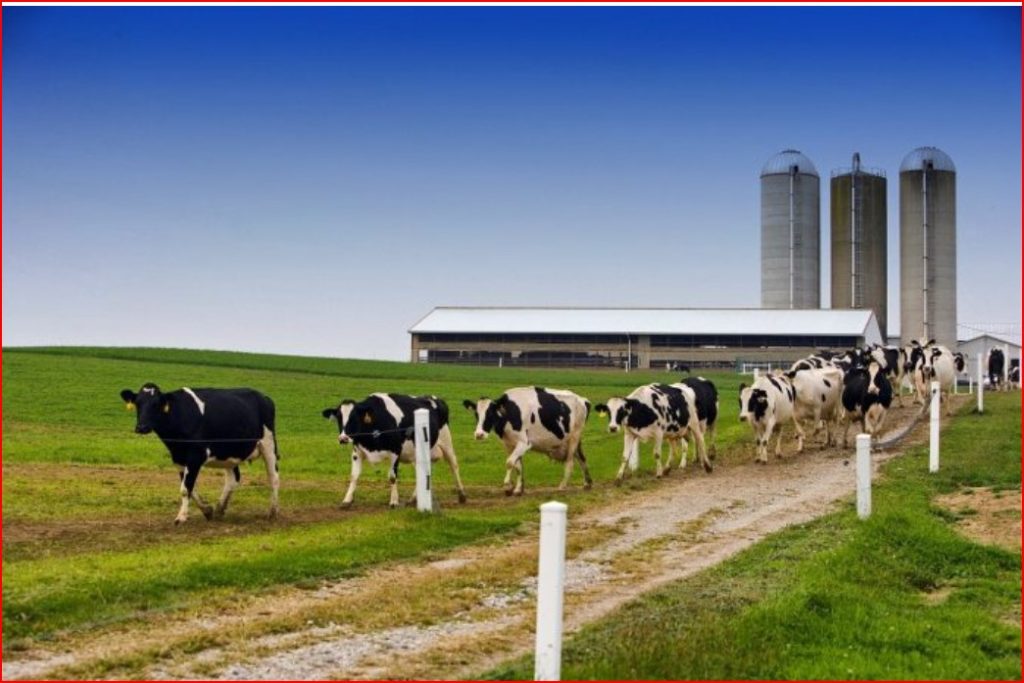
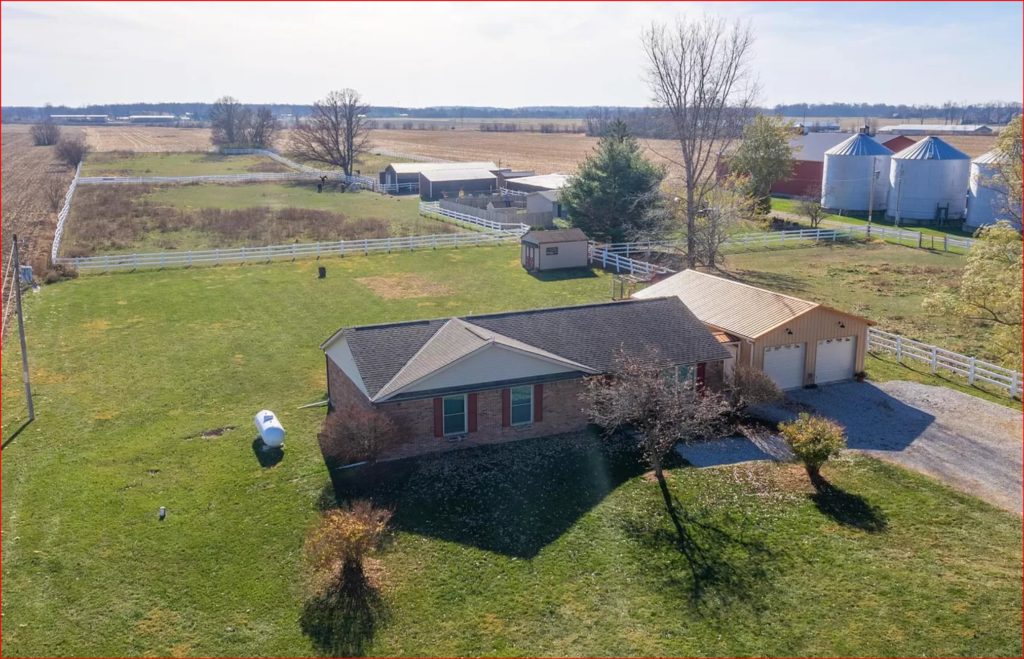
Ohio Commerce
Marathon Petroleum Corporation operates the nation’s largest refining system at 2.9 million barrels per day.
Proctor and Gamble is a global leader in beauty, grooming, health car, fabric, home care, baby, feminine and family care products.
General Electric Company operates world-wide in aerospace, renewable energy, and power. GE manufactures aircraft engines, wind, gas, steam, nuclear and other power generation equipment.
The Sherwin-Williams Company is one of the world’s top manufactures of paints, finishes, coatings, applicators and varnishes. The brand names are ATX, Cabot, Dutch Boy, Fluropon, Krylon, Sherwin-Williams, and Valspar.
Cleveland-Cliffs is the largest producer of flat-rolled steel and iron ore pellets in North America
The Goodyear Tire and Rubber Company is the world’s leading manufacturer of tires under brand names Goodyear, Dunlop, Kelly, Fulda, Debica and Salva plus others. Goodyear also makes and markets rubber-related chemicals.
The Andersons, Inc. is a significant player in the North American agricultural supply chain, especially ethanol, corn oil, and fertilizer.
Owens Corning is famous for its Pink Panther mascot and glass fiber insulation, roofing, and fiber-based glass reinforcement.
J.M. Smucker Company manufactures and distributes branded food and beverages including coffee, cat food, pet snacks, dog food, frozen handheld products, peanut butter, fruit spreads, and baking mixes. Top brands include Folgers coffee, Jif, Milk-Bone, Smucker’s, and Dunkin.
Worthington Enterprises is one of he largest steel processors in the U.S. processing flat-rolled steel and related products.
The Timken Company designs and produces tapered, spherical and cylindrical roller bearings, and other bearings for vehicles, lubrication systems, and chain belts. These products are used in automotive, automation, agriculture, aerospace, construction, and mining under a variety of brand names.
The Scotts Miracle-Gro Company is one of the world’s leading producers of horticultural and turf materials such as grass seed, plant food, fertilizer, weed control and pest control products.
Advanced Drainage Systems, Inc. is the leading manufacturer of water management solutions in stormwater and onsite septic wastewater industries. It manufactures high-density HDPE pipes for storm and sanitary sewers, agricultural drainage, highway edge drains and other applications. It is one of the largest recycling companies in North America taking in over 1/2 billion pounds of plastic waste which is used in the manufacture of septic tanks.
Other companies that started or are in Ohio.
Quaker Oats began in 1877 in Ravenna, Ohio and is now based in Chicago.
Airstream Trailers – manufacturing facility and headquarters are in Jackson Center, Ohio.
Wilson Footballs – are made in Ada, Ohio. The companies headquarters are in Chicago.
KitchenAid – started in Springfield, Ohio and has moved to Benton Harbor, MI.
Bob Evans Restaurants – has 436 locations in 18 states. In 1962 the Sausage Shop began in Rio Grande. This was the start of the Bob Evans Restaurants. Its pork based products are sold in supermarkets as Bob Evans and Owens County Sausage.
Kroger – Cincinnati. As a major grocer, its subsidiaries are Baker’s, City Market, Dillons, Food 4 Less, Food Co., Fred Meyer, Fry’s, Gerbes, Jay C Food Store, King Soopers, Mariano’s, Metro Market, Pay-Less, QFC, Ralphs, Ruler, and Smith’s Food and Drug. It has also merged with Albertsons and is now part of an anti-trust lawsuit over the merger in Washington State. Kroger is the 2nd largest supermarket operator in the U.S. Walmart is 1st.
Victoria’s Secret – Reynoldsburg, Ohio is noted for women’s underwear, lingerie, swim, apparel, sport, beauty and accessories.
Jeni’s Splendid Ice Cream – with headquarters in Columbus Ohio, has 80 ice cream shops in 15 states and Washington D.C. The company started in 2002 and is noted for its artisan flavors.
Cooper’s Mill – Bucyrus Ohio, produces jams, jellies, relishes, sauces and fruit butters found in speciality and ethnic markets. Cooper’s uses only natural ingredients with no artificial colors, sweeteners, preservatives, dyes or corn syrup. Cooper’s is also known for excellent fudge and its entire product line is shipped and sold nation-wide.
Anthony-Thomas Candy Company – with headquarters in Columbus, Ohio, started as a small Greek immigrant candy, soda fountain and icecream shop in 1926. The company incorporated in 1952 and has grown into one of the largest family-owned candy companies in the U.S. Several of its manufacturing processes are patented. It produces the only chocolate easter bunny without a seam in the U.S.
Breweries – Ohio has more than 430 breweries both regular and craft. The largest craft brewery in Ohio is Great Lakes Brewing Co. with many brands on tap, in bottles and cans including monthly special releases.
Coal and Oil
Underlying Ohio is a great seam of coal. It begins in Pennsylvania where it is often exposed in mountain canyons making it easy to strip mine. However, as the seam continues westward it goes deeper and deeper and eventually ends before central Ohio. There are about 58 coal seems in four major groups. Coal in Ohio. As the seams get deeper, surface mining is not possible and coal shafts must be dug. The deepest seams are about 1000 feet under the surface, but mine shafts stay within 500 feet deep, most under 200. Coal is formed from the accumulation of undecayed plant material in swamps. Burial of the plant material under sedimentary rocks creates heat and pressure, transforming the plants into peat and then into coal. As the layer thickens it form layers called seams. Some coal shafts are vertical. On a mountain side, a horizontal shaft can be dug into the seam, and sometimes slanting tunnels are dug. Since mining began, over 3 billion tons have been mined in Ohio. Coal mining is very important in Ohio. It provides 86% of Ohio’s electricity and keeps the electric costs low. Ohio ranks 13th in the U.S. in coal production and 7th in coal reserves.
Ohio has over 220,000 oil and gas wells in 67 counties. Over time over a billion barrels of oil and 9 trillion cubic feet of natural gas have produced. Not all are in production. Some are purposely shut down by the federal government to keep oil in reserve in case of war or other emergencies. Today over 3,000 wells are in production. Up until 1903, Ohio was the nations top producer of oil. It was then passed by Texas and Oklahoma. Ohio is 6th in U.S. production of natural gas.
Young boys often worked in the mines, some as young as 10. In 1891, the U.S. passed mine safety legislation that prohibited using children under age 12. All of the boys in the picture below are at least 12. Use of children had mostly ended by 1920. The Fair Labor Standards Act of 1938 banned labor under ages 18 for underground work in mines, quarries and sand and gravel operations.
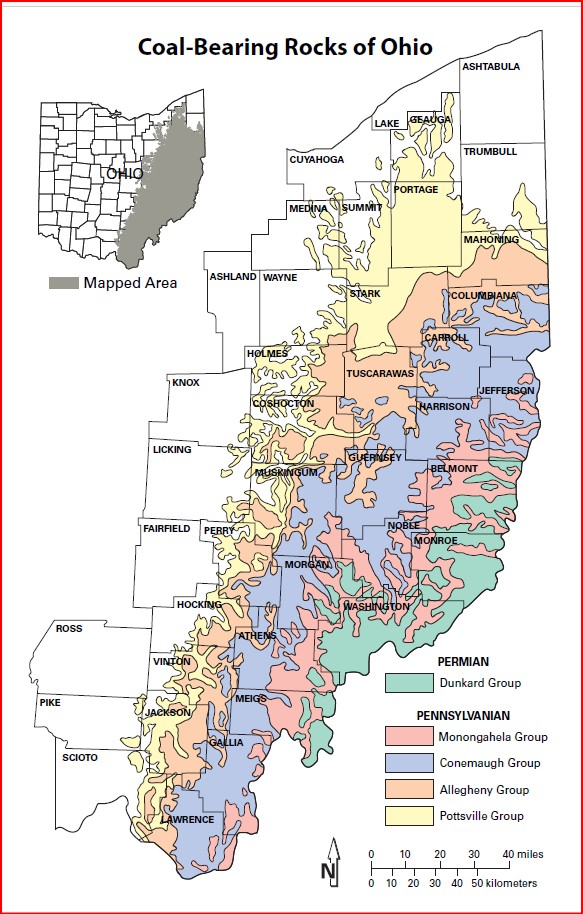


Great Depression
Ohio was affected like the rest of the country. Timber and iron industries were not operational. This caused the coal industry to almost shut down. Food prices dropped so low that the cost of raising food exceeded the sales profit. This then caused food shortages. Even families with income didn’t earn enough to buy more than absolute necessities. Almost everyone had gardens. In some cities, even city parks became community gardens. Thrift gardens in cities fed thousands. These thrift gardens were often tended by unemployed office workers. Enemployment rates in factories exceeded 40% and in construction 67%. Throughout the U.S. the unemployment rate was close to 25%. Even high-income professionals had income drop by 40%. Those who were still working faced reduced working hours and lower wages. Cities decreased in pupulation as families moved into the countryside were they could grow food. Soup kitchens proliferated. Almost every church in the state was doing what it could to stave off starvation, and to gather clothing and other necessities. Almost everything that could be was recycled. People soon learned not to waste anything that could have use. There was a Depression-era motto: “Use it up, wear it out, make do or do without.” As the food budget of the family decreased, casseroles and one-pot meals became the norm. The consumption of items such and soup and macaroni and cheese increased. My own family was fortunate in that we farmed, but I grew up eating a dessert made of tomatoes, boiled with stale bread, sweetened with honey and then covered with milk from our own cow. Even though I was born after the depression, the eating habits continued because of WWII rationing. Movie theaters were almost empty. Ways to provide entertainment without spending much became the way of life. At home, games and the radio were common. Outside entertainment was often dances which at church were free. Other entertainment including board games such as Monopoly, which you only had to buy once and play over and over, and other competitive games dominated. A craze started in the Great Depression – mini-golf. Radio changed its format to provide comedy, soap operas, and life reporting of sports events. Attitudes about accepting welfare changed as it became necessary. Over 2 million men hit the roads as hobos. Many were young men who did it to stop being a burden for a struggling family. Many men deserted their families. One way of travel for these men was “Riding the Rails,” hopping illegally on freight trains and living in shantytowns. My grandfather and my father “Hit the rails” together and returned home when WWII broke out. The stock market crash, and the following poverty, greatly reduced income levels, even among those who had been wealthy or were highly paid professionals. Some wealth men and successful business leaders could not bear the loss of wealth and power and commited suicide.
My grandfather lived on the banks of the Scioto River and my mother and uncle, when children, were given the job of fishing every day to provide meat for the family. If they couldn’t catch fish that day, grandpa would go down to the river and catch a muskrat for dinner. Even roadkill did not go to waste for families. Many families in the U.S. often dined on food gathered by that famous chef “Wheels Pierre!”
Not everyone suffered because of the depression. Many businessmen, especially bankers took advantage. As men lost their jobs, they were not able to make their mortgage payments. Some bankers jumped on that opportuity and became very wealthy landowners. Even though the foreclosing was legal, it made the public aware of he greed and inhumanity of a few.
Did crime incease because of the depression? At first,Yes. but starting in 1934, the rates of homicide and other violent crimes started to fall charply.
Most of the information for this section about the Great Depression came from three sources,the History Channel website, Wikipedia, and information shared from my own family. The History Channel article by Lindsey Konkel was a very useful source.
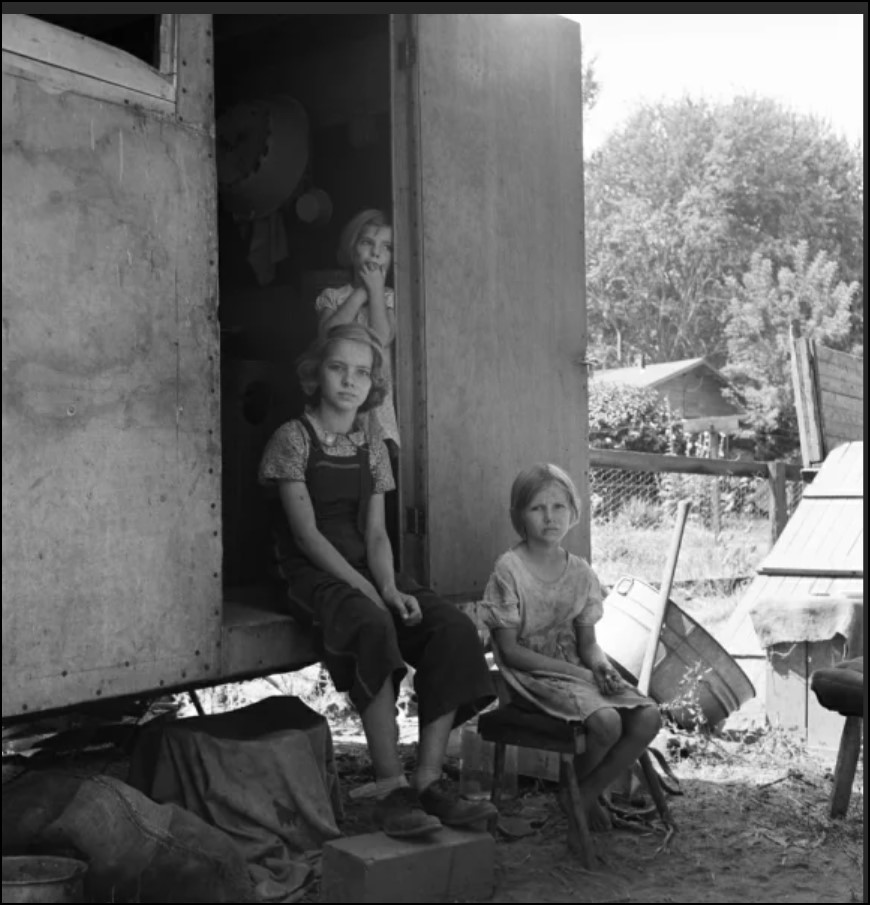
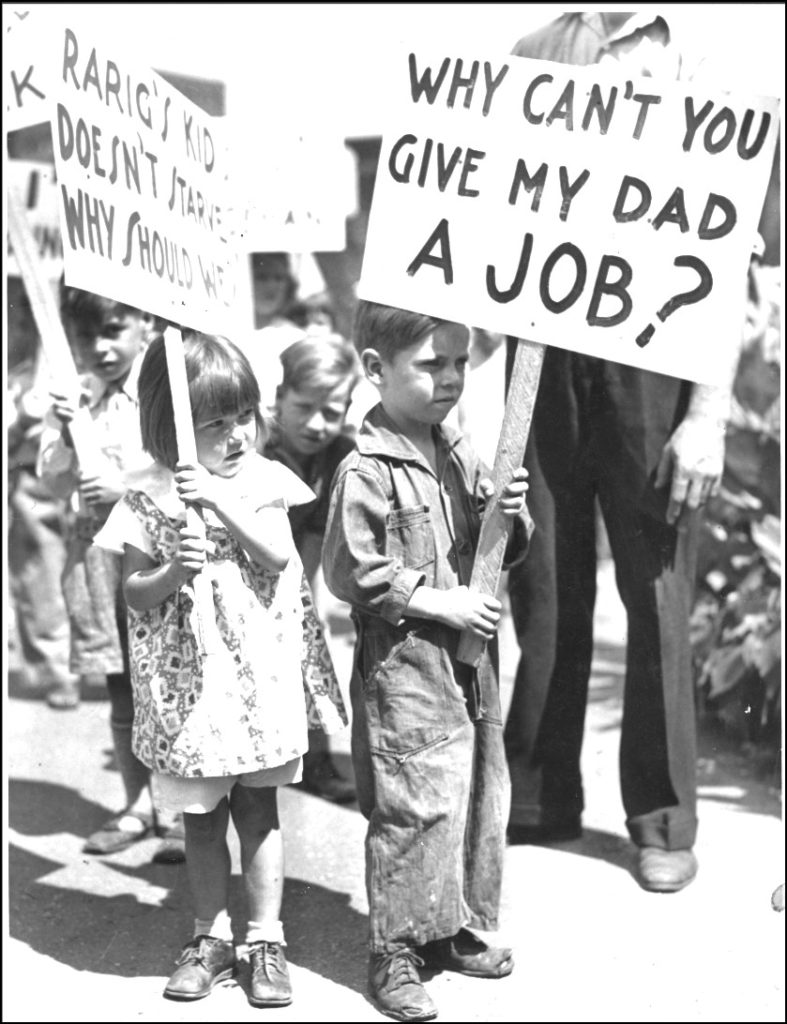
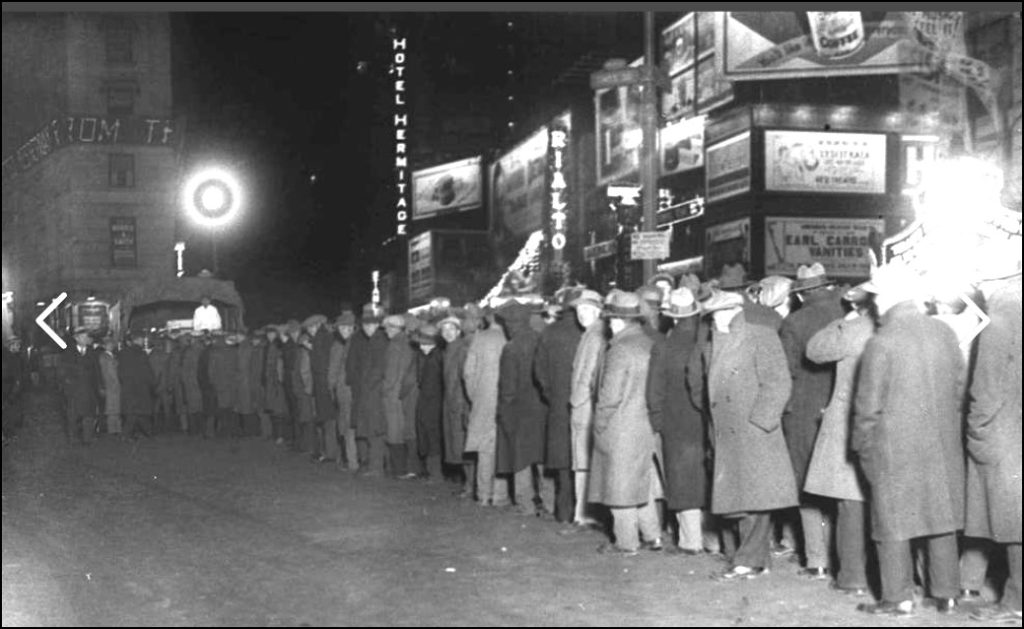
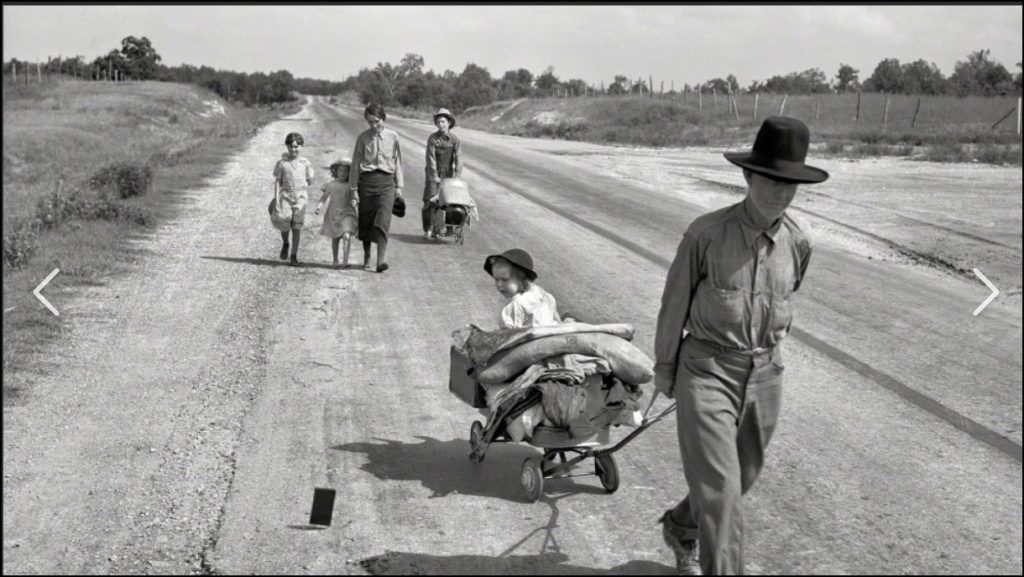
Ohio in World War II
World War II formally ended the Great Depression. Millions of unemployed men and women returned to work. The great task of producing items for the war faced them. Ohio played a great part in the success of the U.S. in World War II, not just in the battlefield but on the home front. As the need to divert production to supporting our military forces overseas, rationing became necessary for products such as: clothing, shoes, gasoliine, fuel oil, tires, silk, nylon, sugar, coffee, lard, shortening, cheese, margarine, processed foods, canned milk, jelly, butter, and dried fruits. Fresh poultry and eggs were not rationed. Bakeries were only allowed to make white bread. People joined scrap drives, and gardens called Victory Gardens helped to the point that they produced 40% all vegetables consumed.
Tire sales were halted for a year. Because of an industry need for metals – automobiles, bicycles, radios, phonographs, refrigerators, vacuums, washing machines, sewing machines and typewriters became unavailable for civilian purchase. To conserve gas, a national speed limit of 35 mph was set all roads in the country. Families received ration cards and you could not own over five tires to obtain a gas card. (4 on the car, 1 in the trunk).
As a child in WWII, our family still had meat. Since our relatives farmed, I always thought it was cattle and hogs we were consuming. When I was a teenager, my mother revealed to my sister and I, that the meat we ate during the war was often horse! I don’t remember what it tasted like, but Mom made great spaghetti and meat balls! We also ate a lot of fish we could catch in the river, and I know we still had poultry to eat.
How many Ohion”s served in the Armed Forces? 12% of the 1940 census. Of the 839,000 who served from Ohio, about 23,000 died or were missing in action. In May 2024, 2ndLt. James H Marrah, a pilot of a B-24 shot down over Romania on August 1, 1943 was found on and returned to West Jefferson, Ohio for burial.
My father and my grandfather served in the Armed Forces. Both in the U.S. Army. My father landed by glider into France during the Normandy invasion as a morter squad commander. He was wounded by a German sniper in Bastogne, Belgium and by German Artillery in the Ardennes forest during the Battle of the Bulge. He helped a Russian squad take the bridge over the Elbe River at the end of the war. He returned home on the Queen Mary along with thousands of other soldiers.
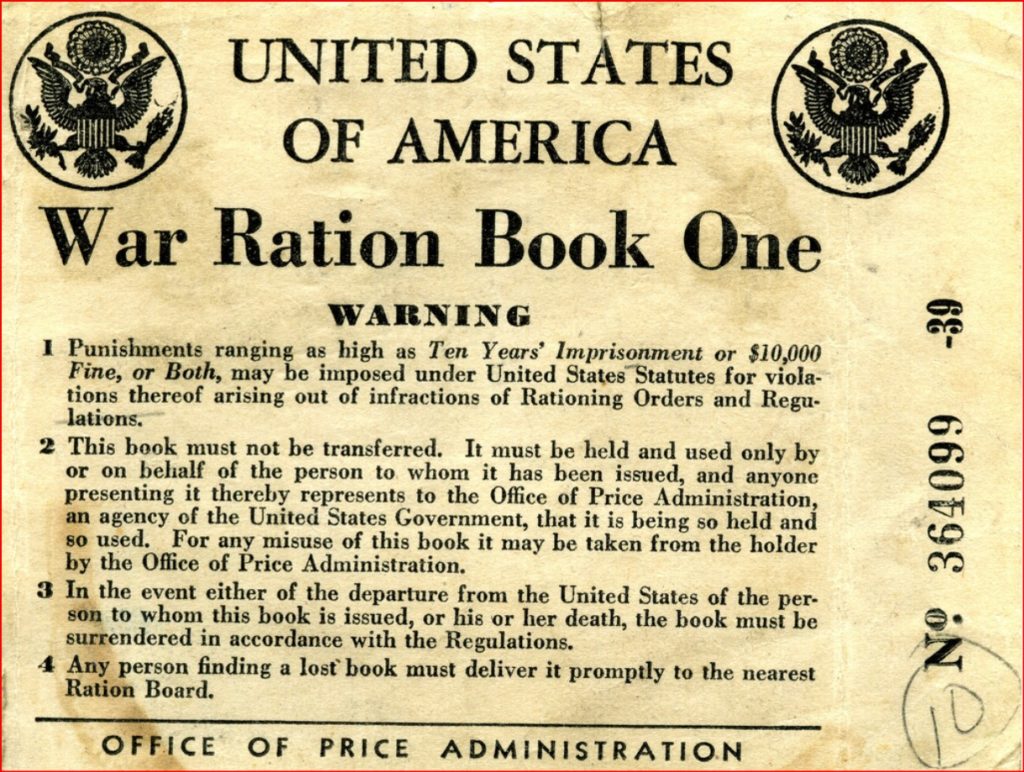
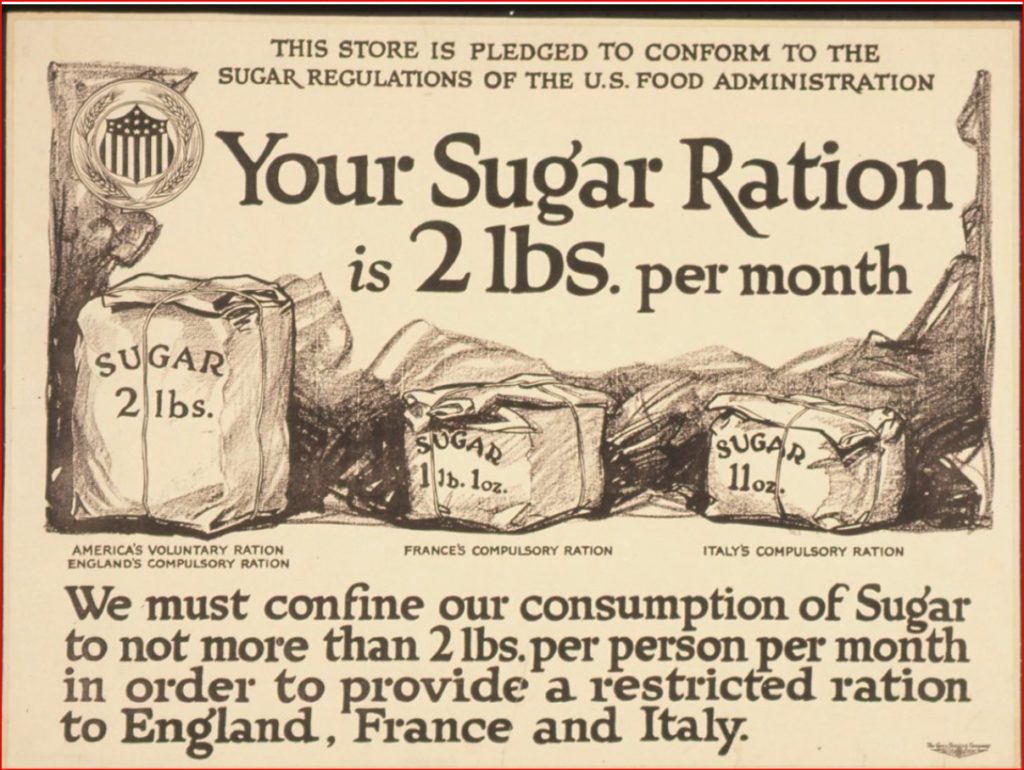
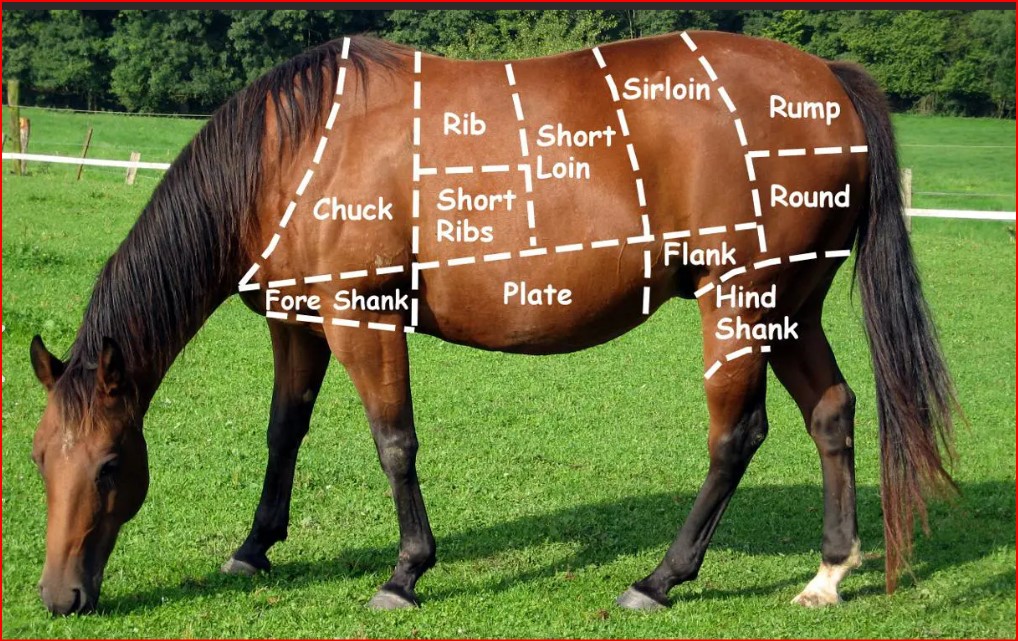
Job Loss and Job Growth.
Every day new business’s start and others close in Ohio. This does not necessarily create job loss, as individuals tend to move on to other jobs.
The real problem is the loss of market segments to foreign competition. America’s best example is the automotive industry. Detroit was once a vibrant manufacturing city, but now parts are a “Ghost Town.” Many major cities in Ohio have been affected by the loss of a great segment of our automotive industry. Marion, Ohio has seen a loss of population and some parts are just rusted buildings from the steel industry which has faced huge foreign competition. Government regulation against pollution has affected the coal and oil industry. As coal mines shut down, men are out of work and sometimes other employment is not available. Farmers with insufficient land cannot compete with mega-farms, and often end up leasing their land for farming to larger operations.
Even schools sometimes have to close when market segment change cause population shifts, or sometimes close because of competition between private and public schools, or because of a rise in home-schooling.
As chain stores and large supermarkets started in Ohio, many “Mom and Pop” businesses failed. Even larger food stores couldn’t compete and Ohio witnessed the demise of A&P, Big Bear and others. New speciality food stores emerged, many specializing in particular types of food merchandise. Aldi’s and Whole Foods are examples. Many ethnic grocery chains and private owned stores came into existence selling products from the Mid-East, Mexico and the Orient. We also had stores come into existance that sell other items besides food. Examples are Wal-Mart, Costco, Sam’s Club and Meijer. Today the top 10 chains that sell food based on number of stores in Ohio in order are are Kroger, Walmart, Save A Lot, Giant Eagle, Marc’s, IGA, Meijer, Gordon Food Service, Market District, and Cosco.
There are other businesses that no longer operate in Ohio. Most have been replaced by other stores that supply consumer needs.
I am listing some for nostalgia purposes. These will bring back memories for many readers. Some of them have caused economic loss for communites. This is a partial list. To list all would take hundreds of pages: May’s Drugs, Western Auto, Galyan’s Trading Company, MC Sports, Casual Corner, Disney Store (only 1 left in Ohio, at Polaris Mall in Columbus), Kids “R” Us, The Limited, Merry-Go-Round, Lazarus, Value City, May Company, Mercantile Stores Company, Now Software, Skybus Airlines, American Ship Building, Erie Railroad and over 40 short line railroads, Columbus Casting, Columbus Buggy, Abott-Detroit, All Metal Products, H.C. Goodman, Kilbourne and Jacobs, Ralston Steel Car Company and many, many factories.
Hundreds of restaurants, ice cream shops, movie theaters, hobby shops, electronic, video, computer, and music stores come and go. Do you remember Gateway, Radio Shack, Acorn, Commodore, Compac, Heathkit, Burroughs, Packard Bell, DEC, Sun and 20 other computer companies that no longer exist?
In Ohio, the leaders in personal computer sales are now Microsoft, Apple, Dell, HP, Lenovo, Acer, ASUS and Google Chromebooks.
Research
Research is the gathering of information. This information is then used to produce inventions, methodologies, written works, etc. Just looking up a recipe is research.
This section points out important things that have resulted in research in Ohio or by Ohio natives. New methods for medical treatment, vaccines, and new medical equipment have emerged from OSU and Cleveland Clinic research. Battelle research has over 1 million patents. Inventors such as the Wright Brothers, Thomas Edison, and Charles Kettering, have enriched our lives in so many ways. Here is a list of some of the thousands of inventions and advancements:
- Vacuum Cleaner (Murry Spangler, a janitor from Canton).
- Traffic Lights (Garrett Morgan, Cleveland 1923).
- Gas Mask (Garrett Morgan, WWI).
- Automobile Starter (Charles Kettering in 1911). Kettering held more than 300 patents, most automobile related.
- 1st gas-powered single-cylinder automobile (John William Lambert, Van Wert Co, 1890.
- Teflon (Roy J Plunkett, 1938) found by accident, a powder left over from a refrigerator experiment.
- Cash Register (James Ritty, Dayton, 1878).
- Trapper Keeper (E. Bryant Crutchfield, Mead Corporation, Dayton, 1978).
- Chewing Gum (William Semple and Amos Tyler, Mount Vernon and Toledo, 1869).
- Cheez It (Green & Green Company, Dayton, 1921 with several patents such as the coating and the crispness).
- dumdums.
- Hardtack (Crackers for the Troops WWI ) (Green & Green Co., Dayton) 6.5 million pounds sent to the military! It came in a special tin developed by the company that kept Hardtack edible in wet conditions.
- Huffy Bikes (Huffy Company, 1953). They also produced training wheels for their bikes. Time has shown that training wheels actually inhibit learning.
- The Airplane (Wright-Brothers, first successful flight 1903).
- Ice Cube Trays (Guy Tinkham, General Utilities Manufacturing, 1933.
- Delco Ignition System (Colonel Edward Andrew Deeds, Dayton, 1909).
- Pop Tops aka pull-tab (Ermal Fraze, Kettering,1959).
- LCD Display (George Heilmeyer, RCA Lab, Cambridge, Ohio, May 1968.
Thomas Alva Edison was born in Milan, Ohio and held 1,093 patents, more than any one American. His work was done in his laboratory in New Jersey. We owe to Edison the light bulb, the phonograph and the film projector.
Battelle Memorial Institute has over 1 million patents for either in-house or cooperative projects such as:
- Nuclear Fuel Rods for the Manhattan Project.
- Nuclear Fuel for submarines.
- Fabrication of Uranium for Manhattan Project.
- Development of Nuclear Reactors for power production and propulsion. The world’s first private nuclear reactor is located at the Battelle Laboratory in West Jefferson, Ohio. It is easier to get into the Pentagon than into that Laboratory.
- Armor Plating for tanks.
- DroneDefender to protect airspace from unmanned aircraft systems.
- Battelle and Triad National Security manage and operate Los Alamos National Laboratory.
- Antimagnetic, rustproof super alloy (Elgiloy).
- Aluminum Foil.
- Copper injection into Plant Fertilizer.
- CD-ROM, 1st digital-to-optical recording and playback.
- Photovoltaic cell for solar energy.
- Solar Sail research for interstellar space exploration.
- Fiber Optics (20 patents).
- Laser beam modulator.
- Polymer Membrane Processing for kidney dialysis and blood filtering.
- Carbon Sequestration Research to reduce atmospheric CO2.
- 1st National Laboratory for Bio Defense Research (Dept of Homeland Security).
- Cyber Innovations Research.
- Thought control for the paralyzed.
- Forensic Genomics and Biosecurity Research.
- First Jet Engines.
- Copier process Xerography.
- Cruise Control for autos.
- Bar Codes.
- Security Threads in Currency.
- Biofuels – Sawdust into Fuel.
- Library science information System.
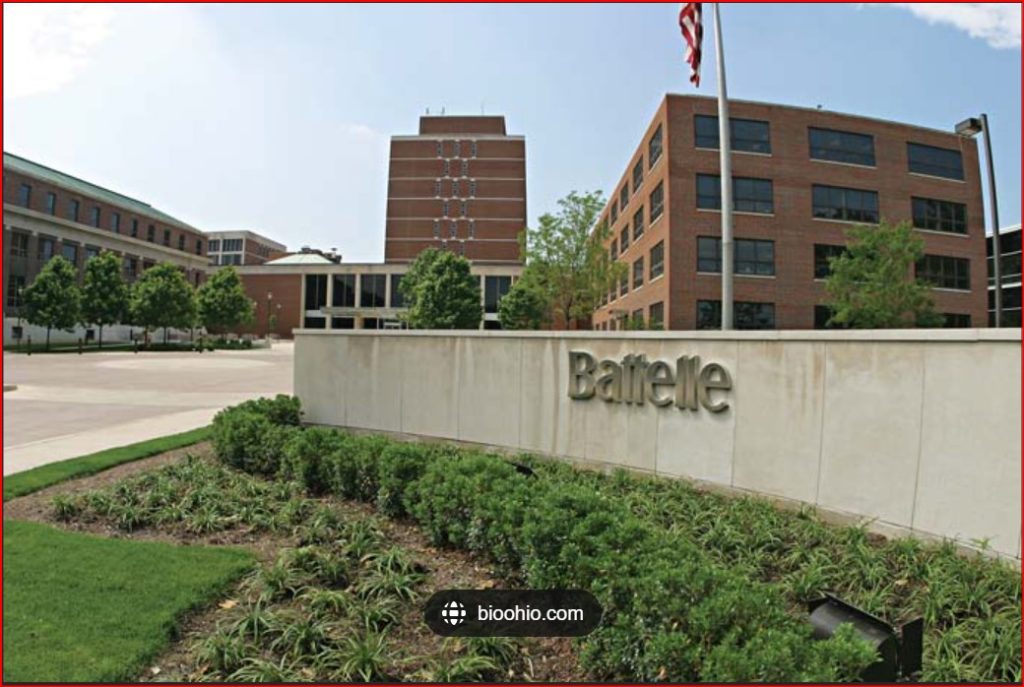
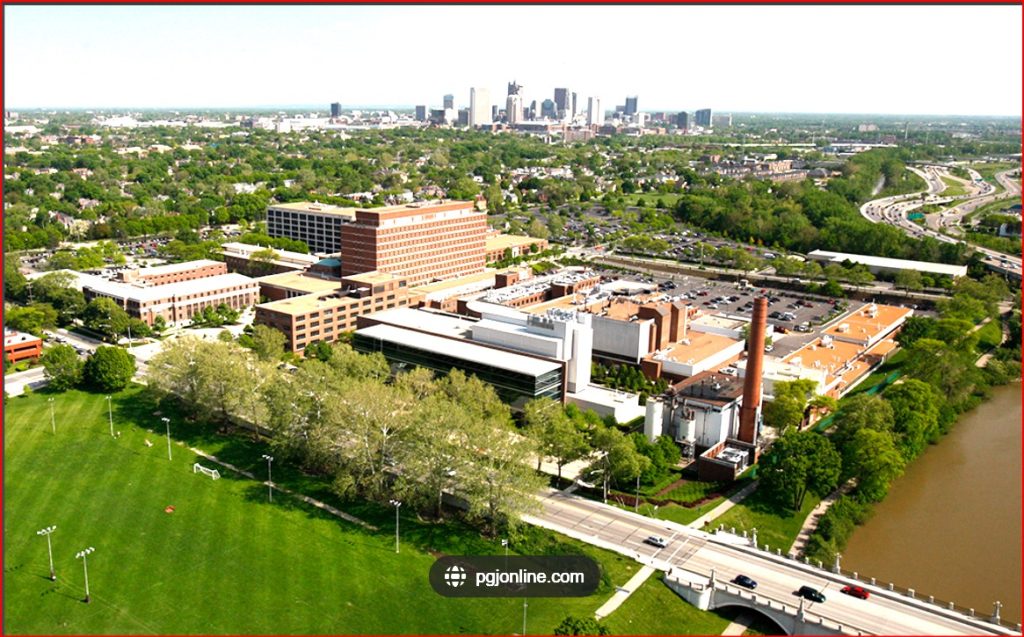
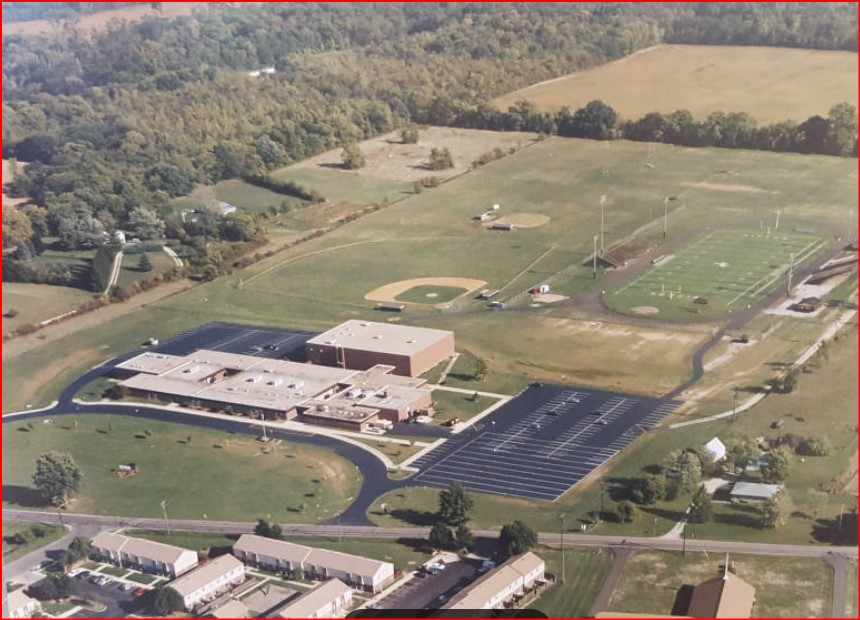
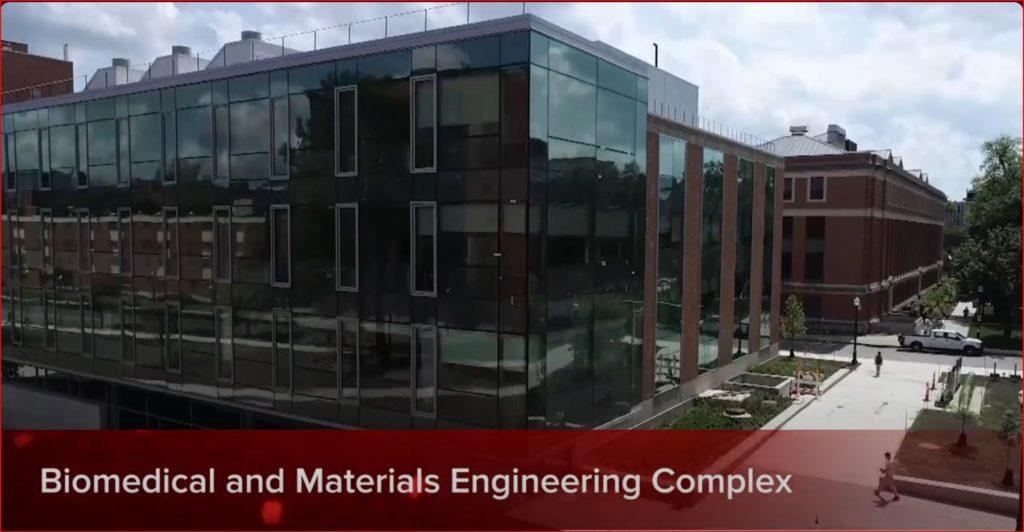
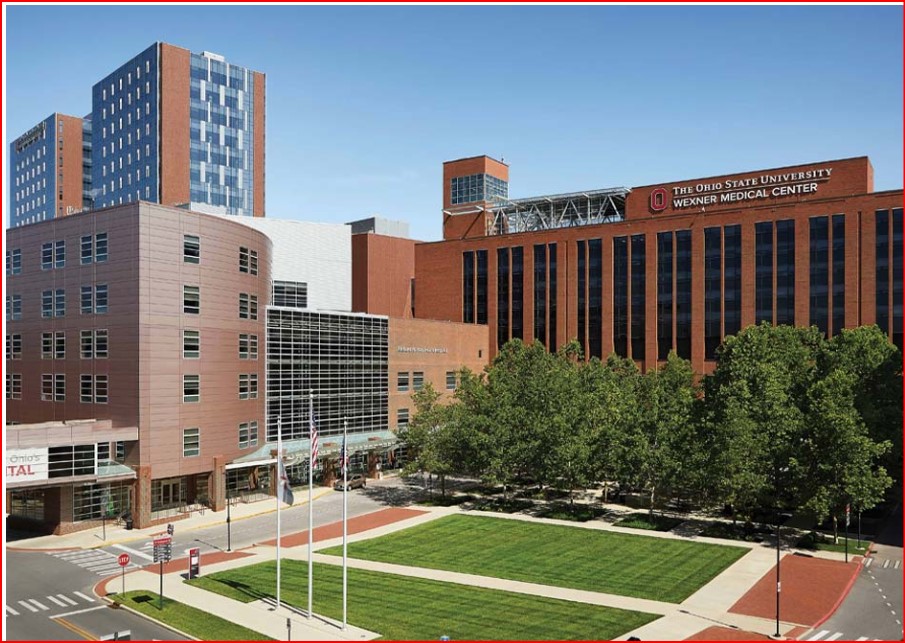
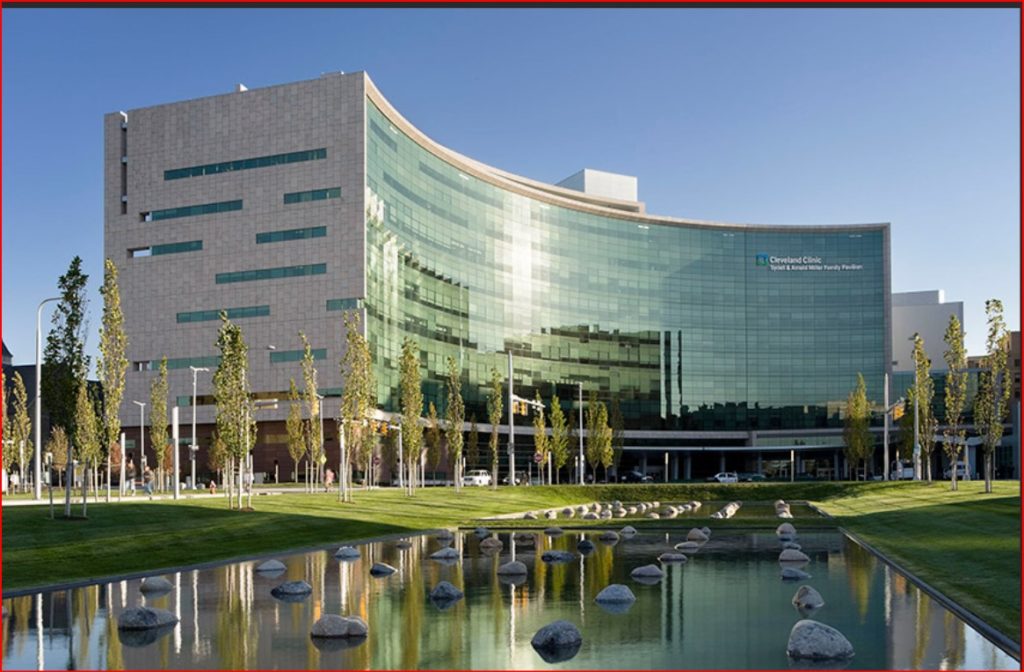
Medical
Of all that has been discussed in this article of Ohio, I feel that this is the most significant section. Why? The change in life span. How is this significant?
The changes in travel, the industrial revolution, changes in farming methods, draining the swamps, growth in education, etc. are important but they all pale in comparison to advances in medical knowlege. The increase in life span changed everything. When Ohio was first settled old age began at 40. Life expectancy between 1700 and 1745 was 43 years! Today it is 79 years. This was all caused by increased medical knowledge, surgical techniques, immunizations, medications, and treatment options. Medical advancements have made it possible for me to be alive today. I should have died at age 6, but penicillan kept me alive. I should have died of cancer in 2004, but a new surgical technique kept me alive. I take insulin. If I stop, I will be dead within 2 years.
Have there been cultural spinoffs of medical knowlege? Yes. Since women can now work beyond child-bearing years, they demanded more rights. The result was women’s sufferage. The years considered as childhood have greatly increased. Children no long have to enter the workforce at ages 10 to 12. This has brought about child labor laws, ages of consent, ages to allow marriages, and voting age. Medical knowleged has made it possible for the lame to walk through electrical stimulation, for people who have lost limbs to receive artifical limbs. Contact lenses didn’t exist when I was born. Hearing aids allow me hear sounds that have been lost. When I was a child we still isolated those with tuburculosis in sanitariums, and placed people in insane-asylums. So I place medical knowledge as the most significant advancement in Ohio history.
Ohio founded Alcoholics Anonymous in 1935 in Akron.